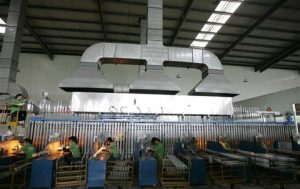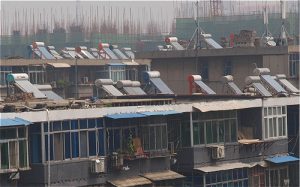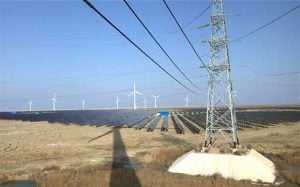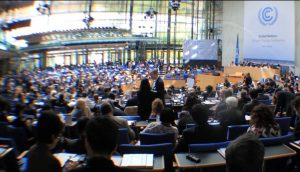In many parts of the world electricity is changing shape disruptively fast. The rise of innovative technology for generation, storage, control and use of electricity is placing traditional structures under ever more severe stress. Might something similar happen in China?
In Germany, Denmark, the US, Australia and elsewhere, traditional large-scale remote power generation based on fire and fuel is being overtaken by smaller-scale renewables, particularly wind and solar photovoltaics (PV).
Wind turbines grow ever larger and more effective, usually now in clusters, onshore and offshore, that look to the system like a single conventional power station.
Solar PV, however, may be significantly more disruptive than wind. As its cost decreases, some solar generation is in large arrays, resembling conventional power stations. But another innovation – high storage batteries – is helping to unlock more potential from renewables and put pressure on traditional electricity suppliers.
Solar PV panels on buildings have until now usually been connected to the local system. Electricity users can then sell surplus output to the grid, and take electricity from it at night or when their solar panels do not produce enough electricity.
‘Death Spiral’
Now, however, the emergence of affordable, reliable batteries creates another opportunity. In southeastern Australia, for example, many households have now installed rooftop solar PV. Many are now adding battery storage and disconnecting from the local electricity network.
Instead of feeding surplus solar output to the network, they feed it to their own batteries. At night the batteries keep their lights on. A similar trend is emerging in the southwestern US.
A household thus becomes self-sufficient for electricity, generating and using all its own power, independent of the local electricity company. For the traditional business model of the electricity company this is bad news. It not only loses a customer for its electricity.
It also loses the customer’s contribution to upkeep of the network. Needing to finance the network, in Australia and the US the initial response of the electricity company was to increase the tariff to its remaining customers.
Needless to say, that immediately persuaded more customers to install solar-PV-plus-batteries and disconnect from the system, in what American electricity analysts now call an incipient ‘death spiral’ for traditional electricity.
The trend has been reinforced by startling developments in battery technology. Elon Musk, the entrepreneur behind Paypal and the Tesla electric car, announced in late April the creation of a new company called Tesla Energy, whose signature product would be a battery called the Powerwall, large enough to run a household for a day or two, to retail at just US$3,500.
Tesla is already constructing what Musk calls its ‘Gigafactory’, to mass produce batteries not only for vehicles but for households.
Other companies, too, are ploughing substantial funds into innovative forms of storage for electricity, notably so-called ‘flow batteries’ which store energy in a charged liquid electrolyte that can be transferred in and out of a battery like petrol to a fuel tank.
China’s vast potential for solar, storage
What might such developments portend for electricity in China? Like many emerging countries China is hard-pressed to keep up with the burgeoning demand for electricity, especially in rural areas.
Local systems based on fire-free generation such as wind and solar PV, coupled with battery storage, might be an attractive technical option, quicker and easier to set up than traditional large-scale power stations, and much cleaner.
Establishing such local systems might also help to stem the tide of discontented rural dwellers flooding into Chinese cities. However, in China as in other emerging countries, electricity is a key source not only of physical power but also of political power.
Decentralised electricity based on fire-free generation and battery storage and under local control already threatens serious disruption to traditional electricity companies in western countries. Such disruption of the traditional order might be profoundly unwelcome in some parts of Chinese society, where state-owned industries are particularly powerful.
On the other hand, China is already a leading global producer of innovative energy technology such as solar PV.
It is also the world’s largest installer of PV – 13GW in 2014, of which 3GW was small-scale and decentralised.
The potential for further innovation, particularly in various forms of battery technology, seems an obvious opportunity for China’s thriving technology sector, especially in collaboration with western firms keen to enter Chinese markets. Moreover, China is eager to develop electric vehicles so it can reduce oil imports.
Given that China is also grappling with the challenge of cleaning up toxic air from fire in coal-burning power stations and petrol and diesel vehicles, harnessing fire-free renewable energy that can be backed by storage both day and night looks like an increasingly attractive option. But it will require careful planning, not only technically but politically. If it succeeds, China could once again offer a valuable example to the rest of the world.
Walt Patterson has just published his latest book, Electricity Vs Fire: The Fight For Our Future. For details and to order it see Walt Patterson On Energy www.waltpatterson.org/evf.htm







